As a BetterHelp affiliate, we receive compensation from BetterHelp if you purchase products or services through the links provided
Body dysmorphia is a significant mental health concern that involves an obsessive focus on perceived flaws in one’s appearance, particularly around weight. This condition can cause an individual to spend significant time worrying about and trying to hide or fix what they see as defects in their body. While weight concerns are prevalent in society due to cultural and social pressures, body dysmorphia weight concerns are more intense; they can disrupt daily life and may be unrelated to how one actually looks.
Understanding that body dysmorphia is more than just feeling unhappy with one’s weight is crucial. It’s a complex disorder that intertwines with issues of self-image and self-worth. This can impact an individual’s everyday decisions and behaviors, from what they wear to how they interact socially. Knowing when these concerns signify a deeper issue, like body dysmorphia, is essential for seeking appropriate care and support.
Treatment for body dysmorphia often includes therapy and may involve medication. Treatment approaches are tailored to each individual, taking into account the unique way in which body dysmorphia affects their life and well-being. Learning to manage and cope with body dysmorphia involves developing a healthier relationship with one’s body and challenging the negative thoughts that fuel the disorder.
Key Takeaways
- Body dysmorphia involves an obsessive focus on perceived physical flaws, especially concerning weight.
- It’s important to distinguish between common weight concerns and the intense preoccupations characteristic of body dysmorphia.
- Effective treatment typically includes therapy, possibly medication, and strategies for developing a healthier body image.
 Understanding Body Dysmorphia
Understanding Body Dysmorphia
When you hear “body dysmorphia,” think of it as a struggle with how you see yourself. It’s like looking in a funhouse mirror but not being amused. You’re standing on a landscape where a little flaw feels like a mountain, which can take a hefty toll on how you feel about yourself.
Definition and Prevalence
Body Dysmorphic Disorder (BDD) is a mental health condition that involves a preoccupation with a perceived flaw in appearance, often imperceptible to others. This concern is not about vanity; it’s a severe affliction where you repeatedly think about your bodily imperfections, real or imagined.
- Prevalence: You’re not alone in this. Research indicates that BDD affects about 1 in 50 people. It’s common among men and women, so remember, it doesn’t single out; it can affect anyone.
Causes and Risk Factors
Understanding the roots of body dysmorphia isn’t straightforward, but it’s thought to be a mix of factors:
- Biological: Some studies suggest changes in brain chemistry or structure may play a role.
- Genetic: Having a family member with BDD might increase your risk.
- Environmental: Teasing, bullying, or societal pressures could contribute.
Key Takeaway: Your lived experiences, biology, and family history intertwine to potentially weave the narrative of body dysmorphic disorder in your life.
Symptoms and Signs
Recognizing the symptoms of body dysmorphia involves awareness of your feelings and behavior patterns:
- Frequently checking the mirror or avoiding it altogether.
- Experiencing low self-esteem related to your body image.
- Engaging in repetitive behaviors to fix or examine the perceived flaw.
Key Takeaway: If your day is disrupted by constant thoughts about a body flaw, and you find it hard to pull your mind away, it might be time to explore this condition with a professional.
Weight and Body Image Concerns
Navigating the complexities of weight and body image is a personal journey that can often feel overwhelming. Understanding how these issues intertwine with daily habits and societal influences is critical.
Weight Preoccupation and Body Image
You might find yourself frequently thinking about your weight and how your body looks. This preoccupation can lead to a skewed body image, where the perception of your size or shape doesn’t align with reality.
- Identify your thoughts about weight and body image
- Reflect on how these thoughts affect your self-esteem and daily life
Key Takeaway: Being mindful of how often you think about your weight can help you recognize patterns that may need addressing.
 Mirror Usage and Avoidance
Mirror Usage and Avoidance
Mirrors can either be tools for self-observation or triggers that exacerbate body image concerns. If looking in the mirror becomes a source of stress or you start avoiding them entirely, it may be time to explore why.
- Evaluate how mirror usage feels: does it bring comfort or discomfort?
- Consider speaking to a professional if avoidance is hindering daily life
Key Takeaway: Mirrors should be neutral objects in your life; if they’re not, it’s essential to understand why and consider seeking help.
The Role of Social Media
Social media often portrays an idealized reality that can warp your sense of a healthy body image. Constant exposure to these images can intensify your dissatisfaction with your appearance.
- Be critical of the images on social media; remember they are often edited
- Limit exposure and curate your feeds to include positive and diverse body types
Key Takeaway: Understanding that social media is a highlight reel, not an accurate reflection of everyday life, can help maintain a healthier body image.
Comorbidity and Differential Diagnosis
Understanding the relationship between body dysmorphic disorder (BDD) and other psychological issues is essential. BDD often exists alongside other conditions, and recognizing these associations can help tailor your treatment.
Distinction from Eating Disorders
Though BDD and eating disorders like anorexia nervosa or bulimia may seem similar due to the preoccupation with body image, they differ in significant ways.
- Eating Disorders: The focus is on weight and food.
- BDD: The concern extends to other perceived defects in physical appearance.
Key Takeaway: Always remember that while the outcome—distress over body image—is shared, the root obsession of eating disorders is distinct from BDD’s broader concerns.
 Overlap with OCD and Anxiety Disorders
Overlap with OCD and Anxiety Disorders
Anxiety and obsessive-compulsive disorder (OCD) can sometimes accompany BDD, making diagnosis a bit tricky.
- OCD: Look for repetitive behaviors or rituals related to appearance (e.g., excessive grooming).
- Anxiety: General feelings of worry might contribute to or result from BDD symptoms.
Key Takeaway: If you notice habits that align more with OCD or a general sense of anxiety, it’s worth discussing this with a healthcare professional to explore the possibility of a co-occurring condition.
Impact on Daily Life
When you’re grappling with body dysmorphia, it’s not just your self-image that suffers; your day-to-day life can take some hard knocks, too. From your professional life to personal relationships, the effects can be far-reaching.
Effects on Work and School
In the workplace or at school, you might find that your struggles with body image are more than just a personal issue — they could start to affect your performance and focus. Maybe you’re spending extra time checking how your clothes fit or feeling self-conscious during presentations when all eyes are on you.
- Work: You may have days when it’s hard to concentrate due to persistent thoughts about your appearance. This can lead to:
- Decreased productivity
- Missed deadlines
- Difficulty collaborating with colleagues because of heightened anxiety
- School: Similar challenges arise, such as:
- Trouble focusing in class
- Lower participation due to fear of attention
- Avoiding group work for fear of scrutiny
Key takeaway: Your professional and educational goals might feel more challenging when your mind is preoccupied with body image concerns.
Social Situations and Relationships
Social gatherings and maintaining relationships become a complex puzzle when you’re living with body dysmorphia. You’re likely to avoid social events or spend hours preparing for them to ease your social anxiety, only to find that it’s still there when you arrive.
- In social situations, you may:
- Decline invitations, lessening your social circles
- Experience significant stress during events, which can dampen your enjoyment
- Struggle with forming connections due to a lack of confidence
- When it comes to relationships, you could notice:
- Tension caused by your insecurities and the need for reassurance
- Challenges in being present and attentive, as worries about your appearance can be consuming
- Potential conflicts arising from the avoidance of activities like dining out or exercising together
Key takeaway: Social interactions might feel like a minefield, but stepping out can be the first step towards regaining confidence in social settings.
 Mental Health Consequences
Mental Health Consequences
The most profound impact may be on your mental health. Body dysmorphia frequently coexists with other mental health conditions, such as depression, which can drain your vitality and darken your outlook on life. Anxiety might clamp down, making even simple tasks feel monumental.
- Mental health conditions like depression can lead to:
- A pervasive feeling of sadness that doesn’t seem to lift
- Loss of interest in activities once enjoyed
- Changes in sleeping and eating patterns
- You may also experience:
- Suicidal thoughts: It’s critical to seek professional help if your thoughts turn in this direction.
- Anxiety and social anxiety: A constant companion that tells you something’s always amiss with your looks, making ordinary interactions fraught with worry.
Key takeaway: Paying attention to mental health is as crucial as managing physical well-being, especially when body image concerns can cast such long shadows.
 Treatment Approaches
Treatment Approaches
Effective treatment for body dysmorphia related to weight often involves a combination of therapy and medication management. Specific strategies can help you navigate the complexity of this condition.
 Cognitive Behavioral Therapy (CBT)
Cognitive Behavioral Therapy (CBT)
CBT is a cornerstone in treating body dysmorphia. It offers you tools to:
- Challenge and modify unhelpful beliefs about your body weight.
- Develop healthier thinking patterns and coping mechanisms.
- Engage in gradual exposure to anxiety-provoking situations to reduce avoidance behaviors.
Key takeaway: Regular CBT sessions have been proven to improve symptoms for many individuals significantly.
Medication Strategies
- Antidepressants: These are frequently prescribed to manage symptoms of body dysmorphia. Selective serotonin reuptake inhibitors (SSRIs), a type of antidepressant, can help stabilize mood and reduce obsessive thoughts.
- Dose adjustment: You must work with your healthcare provider to find the proper medication and dose.
Key takeaway: Medication often plays a critical role in managing symptoms, but it works best when combined with therapy.
Developing a Treatment Plan
A personalized plan is essential. Here’s how you can collaborate with your healthcare team:
- Establish realistic and measurable goals.
- Regularly review and adjust the plan with your healthcare provider to meet your changing needs.
Key takeaway: Flexibility in your treatment plan can lead to more significant long-term improvements.
Alternative and Supportive Therapies
There are additional therapies and supports to complement mainstream treatments:
- Group Therapy: Sharing your experiences with others who understand can be validating and supportive.
- Mindfulness-Based Strategies: Practices like meditation can reduce stress and improve your symptoms.
Key takeaway: Exploring different therapies can enhance your ability to manage body dysmorphia.
Coping and Management
When tackling body dysmorphia related to weight, it’s crucial to develop coping strategies, foster self-acceptance, and lean on supportive resources.
Coping Strategies and Skills
- Journaling: Start by maintaining a daily journal to sort through your feelings. Writing can provide clarity and perspective on your self-image.
- Reassurance Techniques: When negative thoughts emerge, reassure yourself with kind, affirmative statements.
Key Takeaway: Using a journal to track your thoughts can help you understand patterns in your thinking, while positive self-talk can give you a much-needed boost.
Body Acceptance and Self-Esteem
- Positive Affirmations: Practice affirmations focusing on your strengths and values beyond physical appearance.
- Realistic Goals: Set achievable goals for self-improvement that are not solely based on weight.
Key Takeaway: Remember, the scale doesn’t define your worth. Affirmations and realistic goals build a healthier self-image.
Support Systems and Resources
- Support Groups: Join support groups where you can share experiences and receive empathy and understanding from others.
- Professional Help: Don’t hesitate to seek out therapy with professionals specializing in body dysmorphia and eating disorders.
Key Takeaway: There is strength in community, and finding a support group can give you the camaraderie you need. Professional help can also guide you towards a healthier mindset.
Advancements and Considerations
In recent years, understanding and approaches toward body dysmorphia, mainly related to weight, have evolved, bringing new insights and a range of treatment options to the fore.
Recent Research and Insights
- Research Progress: Studies have highlighted the complex interplay between body image and mental well-being, revealing that body dysmorphia is not solely about weight but also involves one’s perception and relationship with one’s body.
- Findings: It’s crucial to know that mental health professionals now recognize the full spectrum of psychological factors contributing to body dysmorphia and emphasize individual-based assessments.
Key Takeaway: Research has steered a more nuanced conversation about body dysmorphia, moving beyond weight to encompass a holistic understanding of body image.

Surgical and Cosmetic Interventions
- Cosmetic Surgery: Plastic and cosmetic surgery advancements have provided more options for individuals seeking physical changes. Procedures have become less invasive and recovery times shorter.
- Cosmetic Procedures: Non-surgical interventions, such as fillers and Botox, have become more commonplace, addressing concerns with minimal downtime.
Key Takeaway: A range of surgical and cosmetic procedures are available today, but discussing expectations and potential outcomes with a qualified professional is always best before deciding on any treatment.

Recognizing the Red Flags: When to Seek Help for Body Dysmorphia
Understanding the Severity of Body Dysmorphia
As outlined above, Body Dysmorphic Disorder (BDD) is more than just a preoccupation with one’s appearance. It’s a mental health condition characterized by an obsessive focus on perceived flaws in one’s appearance – flaws that are either minor or not observable to others. While everyone may have concerns about their appearance at times, BDD is intense and can severely impact one’s quality of life.
Signs of Severe Body Dysmorphia
- Excessive Preoccupation: This is not just the occasional worry about a pimple or a bad hair day. If someone spends several hours a day worrying about and fixating on a specific aspect of their appearance, it could be a sign of severe BDD.
- Avoidance Behaviors: Look out for behaviors like refusing to be photographed or avoiding social gatherings due to extreme self-consciousness about appearance.
- Repeated Behaviors: Constantly checking mirrors, excessive grooming, or seeking reassurance about one’s appearance are common in severe cases of BDD.
- Impact on Daily Life: The most telling sign is when these preoccupations interfere with day-to-day activities, such as work, school, or personal relationships.
Setting Achievable Goals: Charting Your Path to Recovery
Creating Personal Goals
Dealing with body dysmorphia involves setting personal goals that are realistic and achievable. These goals should focus on improving one’s mental health and well-being rather than solely on changing physical appearance.
- Self-Acceptance Goals: Aim for goals that encourage self-acceptance. For instance, practicing positive self-talk or engaging in activities that make you feel good about yourself.
- Behavioral Goals: Set objectives to reduce the compulsive behaviors associated with BDD. This might include limiting mirror checks or reducing the time spent fixating on perceived flaws.
- Professional Help Goals: If you haven’t already, set a goal to seek professional advice. This could be scheduling a therapy session or joining a support group.
Realistic Timelines
Understand that recovery is a gradual process. Set realistic timelines for your goals. Short-term goals can be daily or weekly, while long-term goals might span several months or a year.
Celebrate Small Victories
Remember, every small step taken is a victory. Celebrate these milestones, as they are significant indicators of your progress.
Recognizing Progress: Celebrating Your Journey
Tracking Improvements
It’s important to acknowledge and celebrate progress in dealing with body dysmorphia. Keeping a journal or log can help you track improvements over time.
- Behavioral Changes: Note any reduction in compulsive behaviors or avoidance tactics.
- Emotional Growth: Acknowledge improvements in mood, decreased anxiety, and better coping mechanisms.
- Positive Feedback: Record positive feedback from therapy or support groups.
Reflecting on Challenges Overcome
Reflect on the challenges you’ve faced and how you’ve overcome them. This reflection can be empowering and a reminder of your strength and resilience.
Adjusting Goals as Needed
As you make progress, revisit and adjust your goals. Recovery is dynamic, and your goals should evolve with your journey.
Seeking and Accepting Support
Recognize that seeking and accepting help from others is a sign of progress. Whether it’s from professionals, support groups, or loved ones, embracing support is a key step in your recovery journey.
Mental Health Complications
It’s essential to recognize that BDD often coexists with other mental health conditions such as anxiety, depression, and eating disorders. The obsessive nature of the disorder can lead to significant emotional distress and a heightened risk of self-harm or suicidal thoughts.
When to Seek Professional Help
It’s time to seek professional help when these symptoms become overwhelming and disruptive. A mental health professional, especially those with experience in treating BDD, can offer the most effective treatment strategies, including cognitive-behavioral therapy and medication.
Helpful Resources
There are numerous resources available for those struggling with BDD, including:
- Support Groups: Groups like the Body Dysmorphic Disorder Foundation offer community support and resources.
- Therapy: Therapists specializing in cognitive-behavioral therapy can help individuals reframe their thoughts about their bodies.
- Online Resources: Websites like the Anxiety and Depression Association of America provide educational material and guidance on finding professional help.
Encouraging a Supportive Environment
Creating a supportive environment involves:
- Open Communication: Encourage open and non-judgmental conversations about body image concerns.
- Education: Educate yourself and others about BDD to foster understanding and empathy.
- Support: Be a supportive listener and avoid dismissive comments about one’s appearance or concerns.
Conclusion
Recognizing the severity of body dysmorphia is a crucial step in seeking help. Reaching out for professional assistance is a sign of strength, not weakness. If you or someone you know is struggling with these symptoms, remember that help is available, and recovery is possible. Your mental health and well-being should always be a priority.
Frequently Asked Questions
Body dysmorphia related to weight often goes unrecognized, yet understanding its symptoms and knowing where to find support are crucial steps toward wellness.
What are the common symptoms of body dysmorphia related to weight perception?
Suppose you’re excessively worried about your weight, and it’s consuming your thoughts. In that case, you might notice symptoms like checking your reflection often, avoiding social situations due to body image concerns, or perceiving flaws in your weight that others don’t see. Remember, these persistent thoughts can significantly impact your daily life.
How can someone tell if their weight concerns are a sign of body dysmorphia?
It’s not uncommon to fret about weight, but it crosses into body dysmorphia when it’s all you can think about, and your self-worth is tied to your body image. If these thoughts hinder your everyday routine, it’s a sign to seek professional advice.
What kind of treatments are available for individuals struggling with body dysmorphia focused on weight?
Body dysmorphia treatment could include therapy, like cognitive-behavioral therapy (CBT), or medication, such as antidepressants. It’s a condition that needs expert care, so it’s best to consult a healthcare provider to tailor a plan just for you.
Can body dysmorphia only be related to weight or can it involve other aspects of appearance?
While weight may be a critical factor in body dysmorphia, it can surely involve other aspects of your appearance, like skin, hair, or facial features. The intense fixation on perceived flaws, whether they’re weight-related or not, characterizes the condition.
How does body dysmorphia affect daily life, particularly regarding eating and exercise habits?
Body dysmorphia can lead to unhealthy eating and exercise patterns in a quest to change your appearance. This often means skipped meals, overexercising, or even disordered eating patterns, which can affect your overall well-being.
Are there any coping strategies or support groups recommended for those dealing with weight-related body dysmorphia?
Certainly! Joining support groups can provide a sense of community and understanding. Coping strategies might include mindfulness exercises and setting realistic goals. Sometimes, discussing your challenges with trusted friends or family can offer relief.
- 7 Ideas to Help You Relax and Unwind on a Family Vacation - April 27, 2025
- How Having Cybersecurity Protection Helps You Relax - April 25, 2025
- 8 Reasons Why Spending Time Outside Calms You Down - April 25, 2025
This site contains affiliate links to products. We will receive a commission for purchases made through these links.

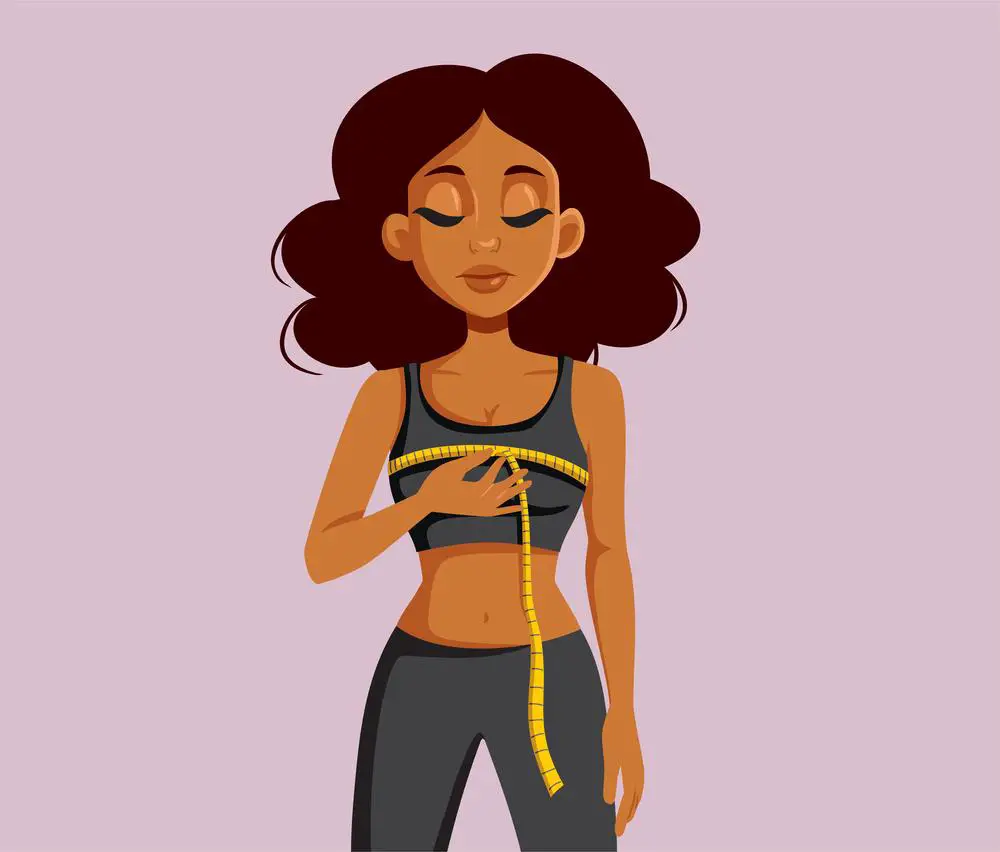
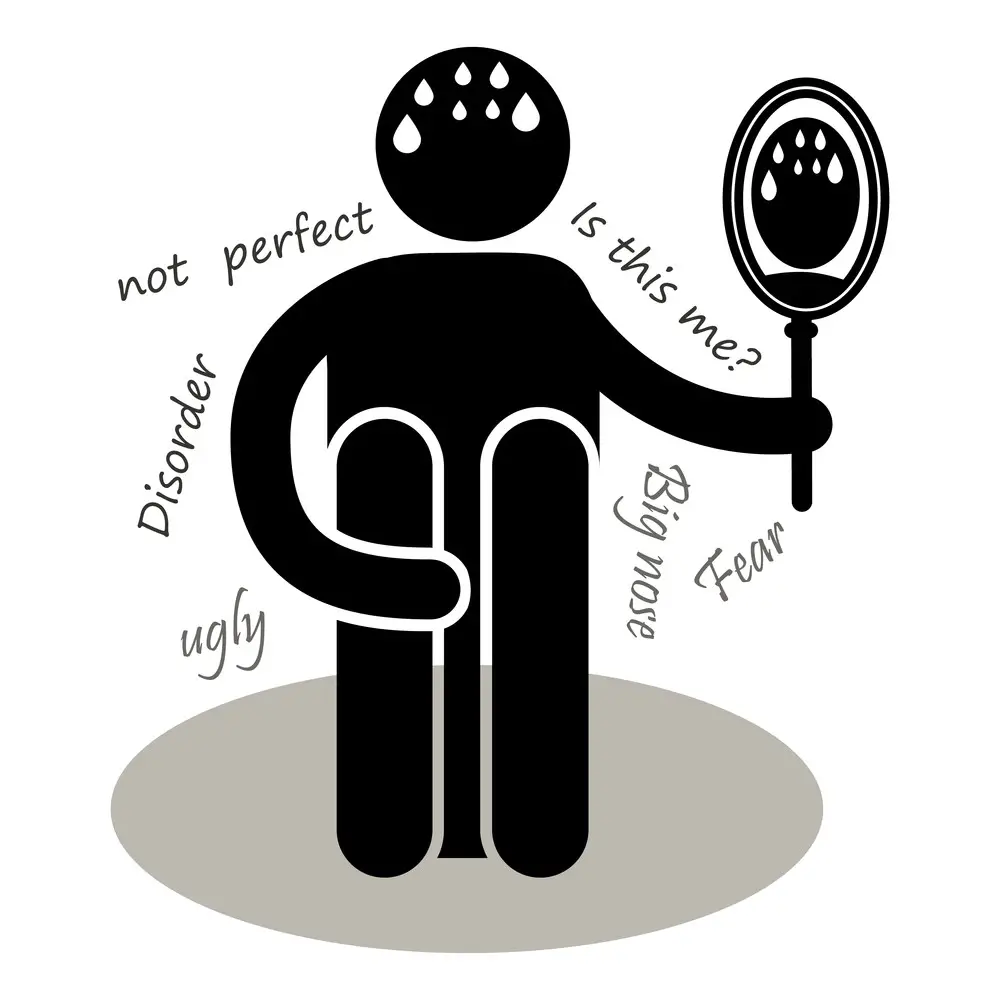 Understanding Body Dysmorphia
Understanding Body Dysmorphia Mirror Usage and Avoidance
Mirror Usage and Avoidance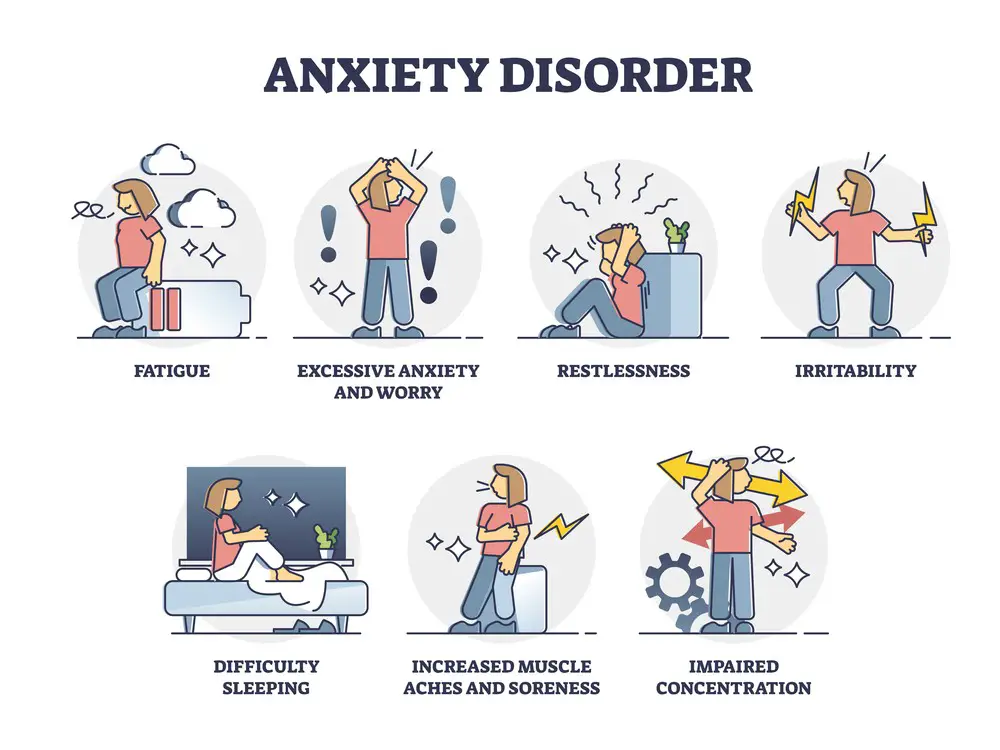 Overlap with OCD and Anxiety Disorders
Overlap with OCD and Anxiety Disorders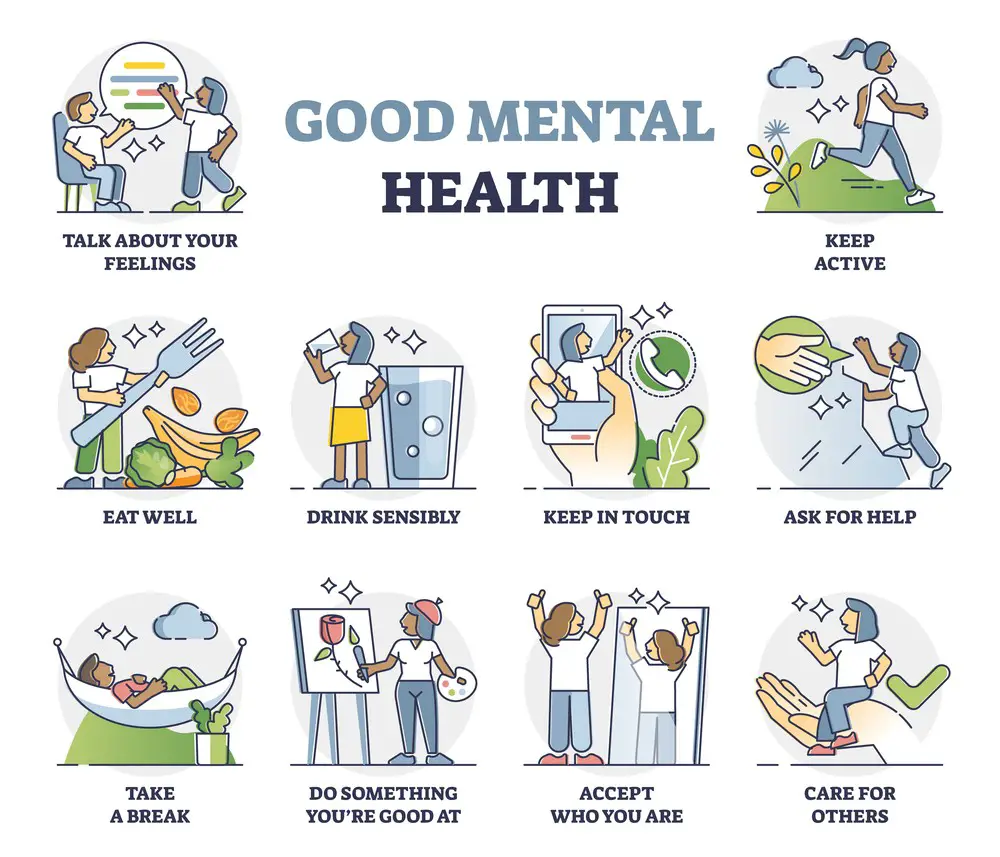 Mental Health Consequences
Mental Health Consequences Treatment Approaches
Treatment Approaches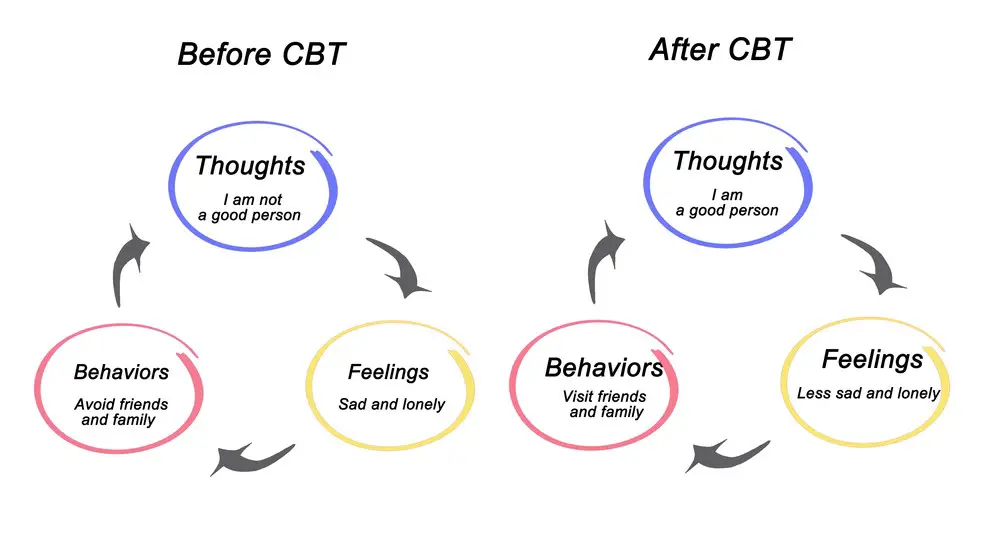 Cognitive Behavioral Therapy (CBT)
Cognitive Behavioral Therapy (CBT)
